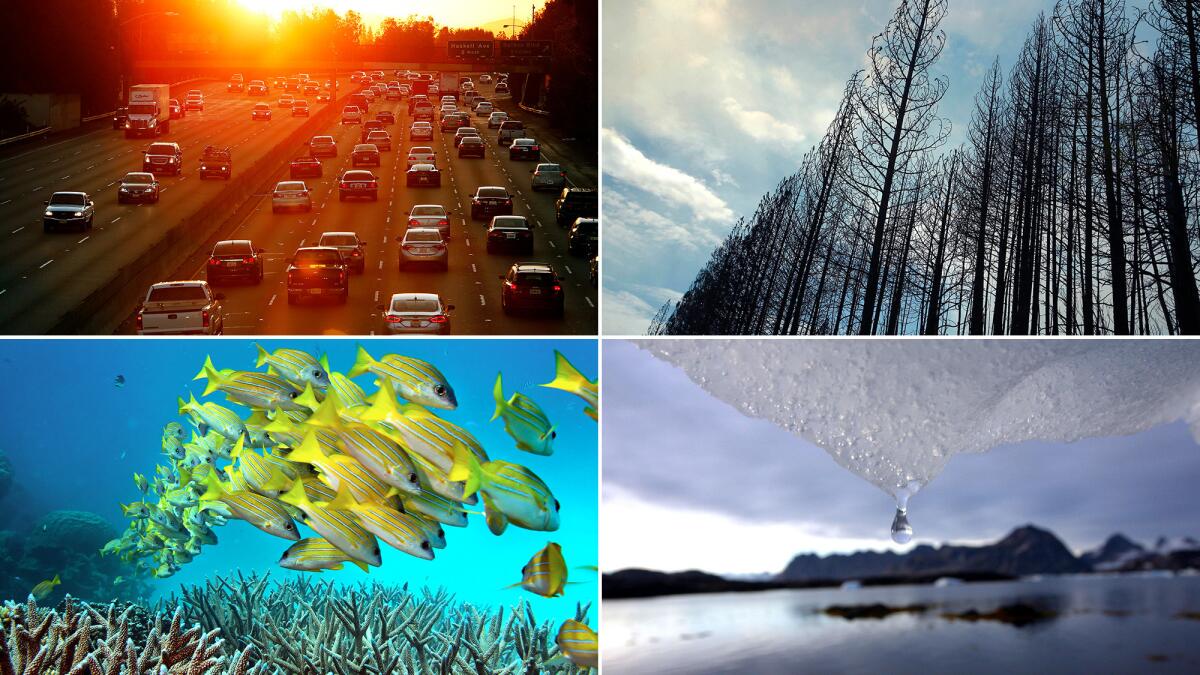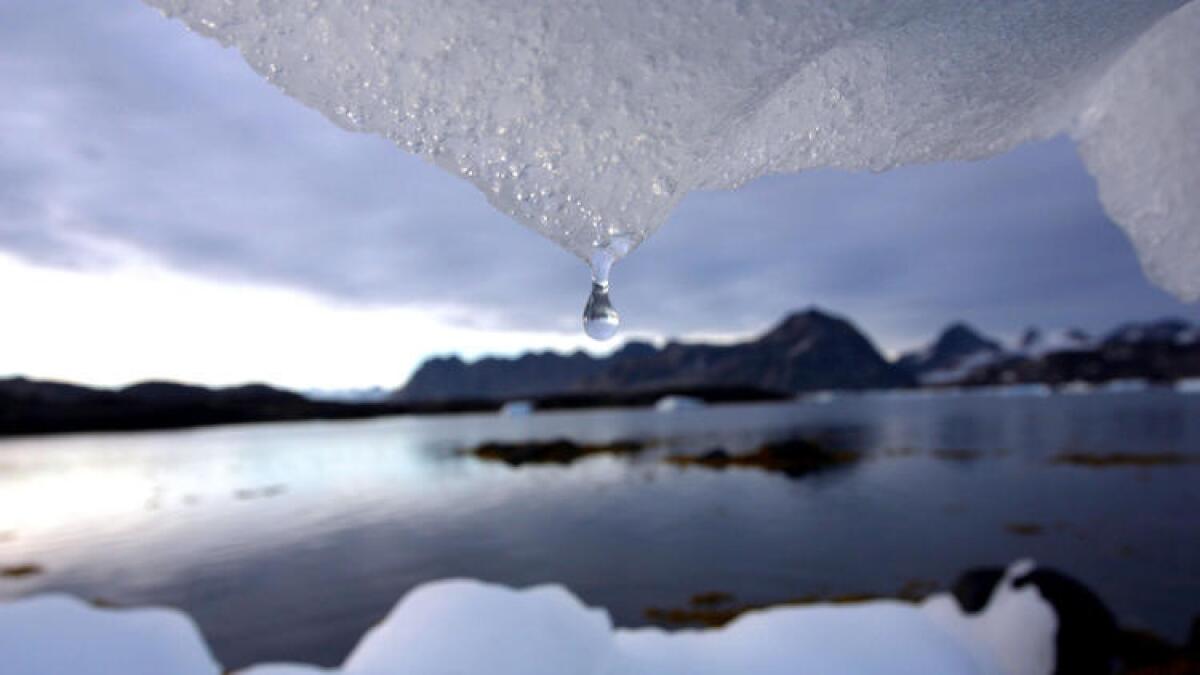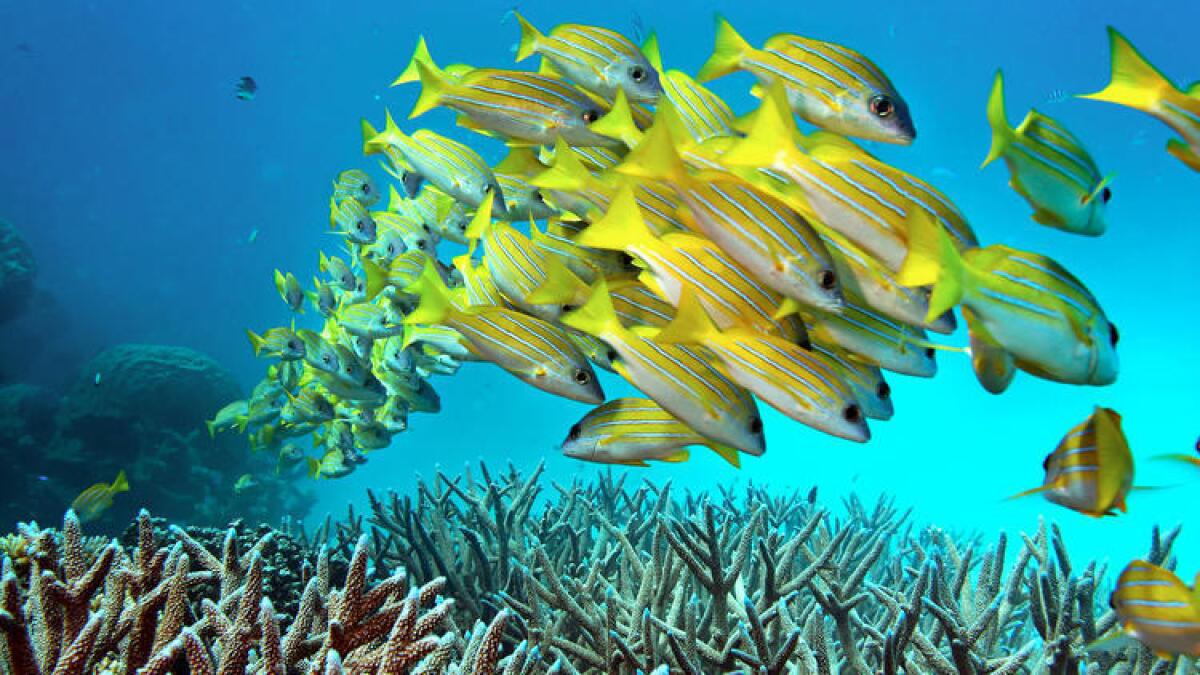Wildfires, sea level rise, coral bleaching: Climate change is already here

From extreme wildfires in the Western United States to melting ice sheets in Antarctica, the effects of rising temperatures on Earth have not gone unnoticed.
On Thursday, NASA and the National Oceanic and Atmospheric Administration announced 2017 was at least the third hottest year on record. The year 2016 holds the record as the hottest. Before that, the record was set in 2015. Before that, it was 2014.
For the record:
11:45 p.m. Jan. 18, 2017An earlier version of this story incorrectly stated warmer ocean temperatures are capable of dissolving more carbon dioxide. They actually dissolve less.
Both agencies linked the record-breaking temperatures to human-caused climate change. Carbon dioxide and other greenhouse gases released by cars, factories and power plants trap more heat in the atmosphere, causing temperatures to climb upward.
Although the most severe consequences of this warming have yet to come — especially if greenhouse gas emissions remain at current levels — some of the effects have already been felt. Scientists, public health officials and even the Pentagon are watching with great concern. Here’s a look at some of those effects:
Wildfires in the West are twice as bad

Over the last 30 years, the West has seen a dramatic increase in wildfires. Scientists recently determined that human-caused warming nearly doubled the area of land that has burned since the 1980s. That amounts to 16,000 additional square miles, or the size of Massachusetts and Connecticut combined.
The difference was the amount of plants, trees and dead vegetation that dried out in the warmer, drier conditions that have become more common in recent decades. Without these dry conditions, half as much land would have burned, the study found. The authors said they may have underestimated the role climate change plays in wildfire. Their analysis did not include other effects of warming, such as the spread of tree-killing bark beetles and declining snowfall in the West.
Fires, droughts and hurricanes: What’s the link between climate change and natural disasters? »
As the Arctic ice melts, sea levels rise

Melting glaciers and diminishing sea ice have increased the amount of water in the oceans, leading sea levels around the world to rise by an average of about 6 inches over the last century. At the same time, higher temperatures have caused seas to expand. By the end of the century, waters could rise by 6 feet or more, threatening 13.1 million residents of U.S. coastal cities with flooding, two studies predict.
In another study, scientists determined that the average American produces about 16 metric tons of carbon dioxide per year and is responsible for melting about 50 square meters of Arctic sea ice.
Higher sea levels mean high tides can more easily swamp low-lying coastal regions, such as South Florida. This also means storm surges from hurricanes and tropical storms will hit coastlines harder. Scientists say the surge from Hurricane Matthew, which struck Florida in October, was amplified by climate change.
A sea of problems

The oceans absorb heat and carbon dioxide from the atmosphere. That buffers some of the effects of climate change seen on land, but it shifts them under the sea.
More dissolved carbon dioxide causes the water to become more acidic over time. Ocean acidification, sometimes called the twin of global warming, can interfere with the ability of shellfish and corals to form hard shells. It also makes fish and sea snails behave abnormally.
Last year saw record coral bleaching events, leading one publication to pen a somewhat hyperbolic obituary for the Great Barrier Reef. The truth is corals can recover from some bleaching events — if the temperature goes back down.
How the Great Barrier Reef is responding to global warming. (Hint: not well) »
Plants and animals on the move
In response to rising temperatures, thousands of plant and animal species have migrated uphill or toward the poles where it’s still cool enough for them. The result: Species leave their ancestral homes, causing local extinctions in those areas. As suitable habitat becomes harder to come by, many species — such as the alpine chipmunk of the Sierra Nevada — will find themselves boxed in to small ranges, increasing the risk of a species-wide global extinction.
But as some species flounder in warmer temperatures, others thrive. Global warming has opened up new habitats for mosquitoes, which transmitted the Zika virus throughout South America and contributed to the near-collapse of native birds on the Hawaiian islands.
Warmer temperatures may be nice for now, but the feeling won’t last

In April, a study found that 80% of the U.S. population lives in counties that are experiencing more pleasant weather than they did 40 years ago. This boils down to warmer winters and milder summers. But by the end of the century, that trend will flip.
If greenhouse gas emissions continue unchecked, more people in the U.S. will experience hotter summers and more common heatwaves.
That has public health officials worried. In Los Angeles, rising temperatures could degrade the quality of our air and water and lead to an increase in cardiovascular disease and asthma. A 2006 heat wave saw triple-digit temperatures last for more than a week, killing 650 people in California.
UPDATES:
10:50 a.m.: This article was updated with the 2017 global heat record.
This article was originally published on Jan. 18, 2017.







